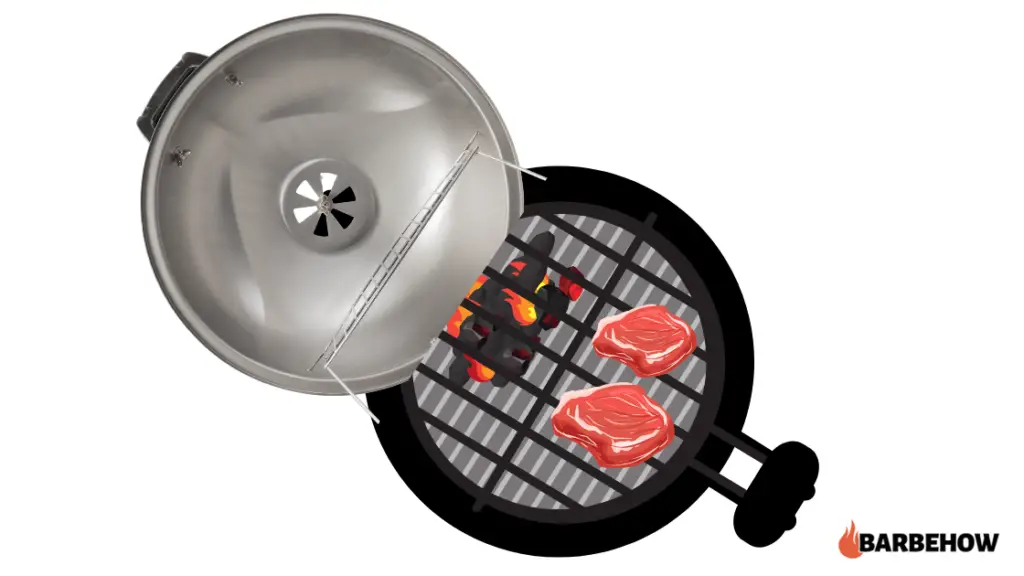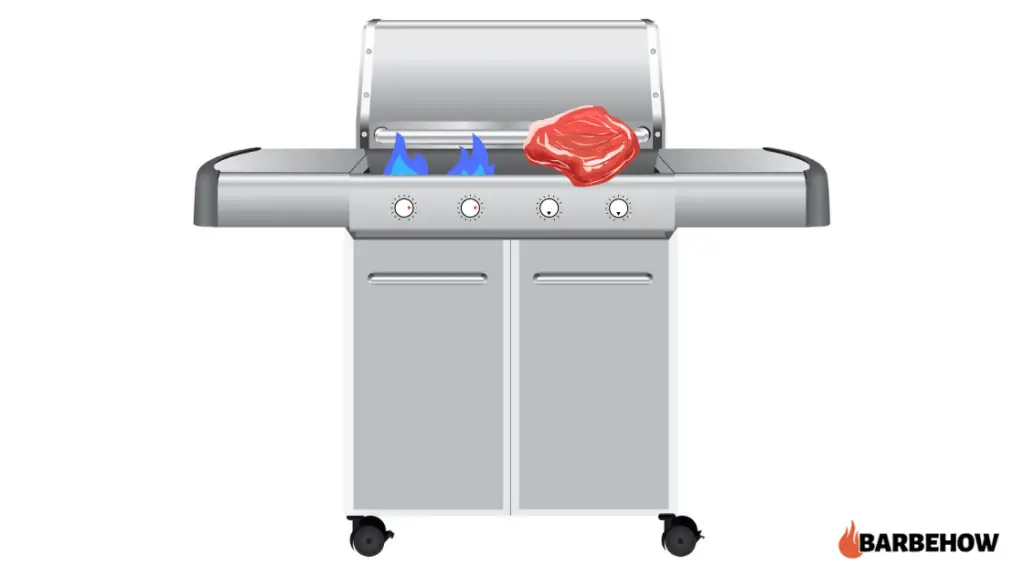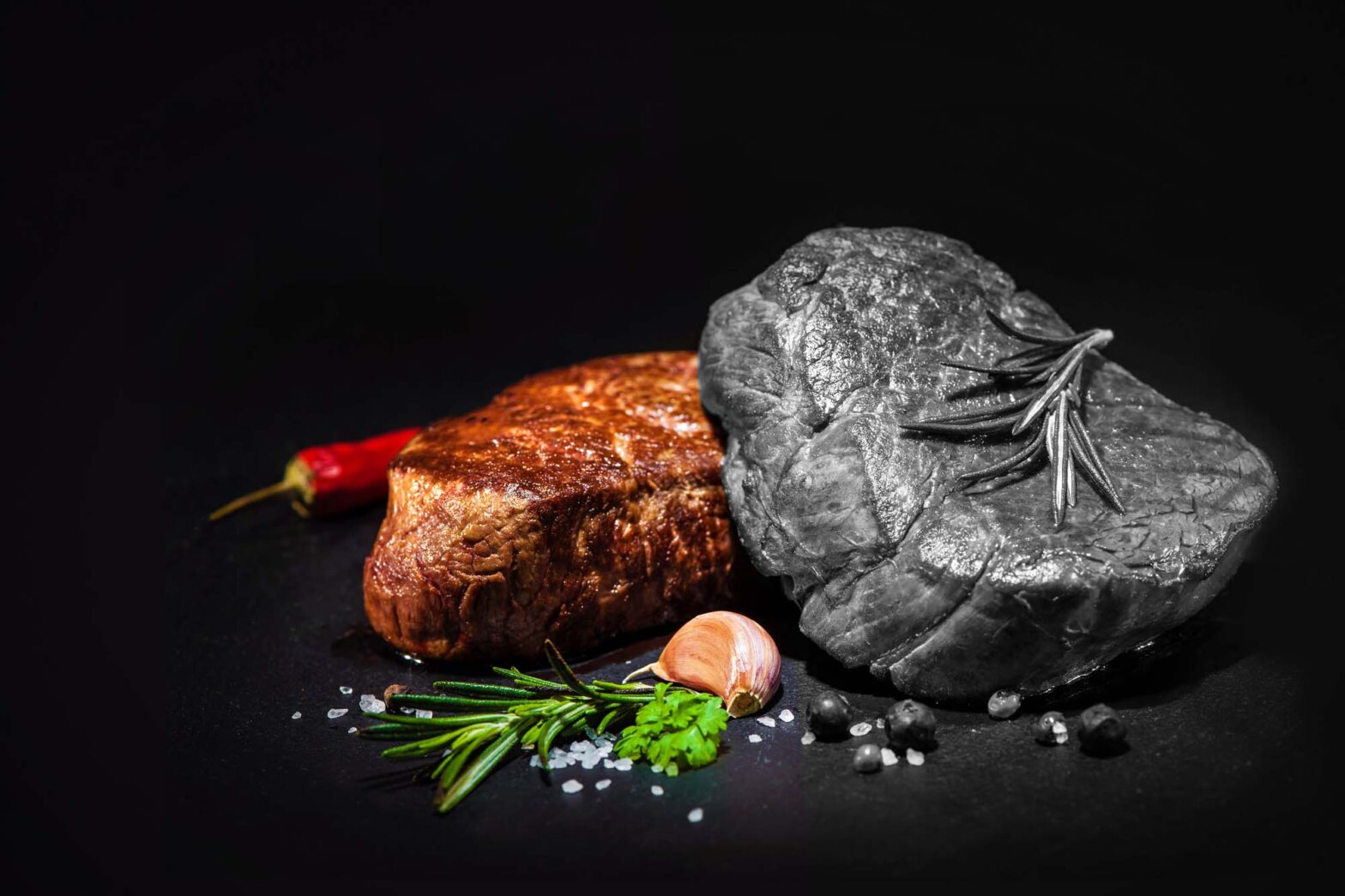So you made steak, whether on the grill, the stove, or in the oven. But, instead of that browned, crispy exterior and that juicy, pink interior, you got gray meat.
Why did your steak turn gray?
This is a question that has plagued more than one meat lover throughout history, no doubt about it.
Graying of the meat’s surface is a more common problem than you might think. Nine times out of ten, it happens for one reason and one reason only: insufficient heat.
A steak will turn gray if the cooking temperature isn’t high enough to brown it on the outside. Browning only occurs in the temperature range from 284°F to 355°F. If the temperature is below that, the meat turns gray. If it is higher, it turns black.
Red meat gets its vibrant, reddish to purplish color from an iron-rich protein called “myoglobin.” The more myoglobin the meat contains, the deeper and darker the color, making it look more appealing to the eye.
When you cook meat, the proteins in it break down, which changes its taste, smell, texture, and color. The meat becomes moist, tender, and safe to eat. (This is why, with the exception of steak tartare and sushi, we seldom eat raw meat.)
That color, though, can go two ways. Generally, meat turns white to gray when cooked. For that golden brown color, the meat must sizzle long enough on a hot enough surface so that browning can happen.
The details why, below.
How Browning Works
Browning takes place when the surface of meat gets heated to a temperature of 284°F and above.
Also known as “the Maillard reaction,” browning happens when the proteins and carbohydrates in protein-rich foods collide and fuse together in the heat of cooking.
The merits of browning are many—and they are not just limited to the golden brown color of the meat.
As a by-product of browning, hundreds of new aromas and flavors are created on the surface of the meat, imparting it with a meaty smell and savory taste.
Steak literally smells and tastes better when it is browned.
The browning reaction is why we sear a steak by exposing it briefly to high heat. It’s also why steak doesn’t turn golden brown when boiled or cooked sous vide: water boils at 212°F, well below the 284°F required for browning to take place.
That said, don’t crank the knobs all the way up and expect superior results. At temperatures of 356°F and above, browning stops, and burning, also known as “pyrolysis,” starts.
Burnt steak turns black and tastes bad. The smell and taste that come from searing are destroyed. They get replaced by an acrid bitterness that comes from harmful compounds you really don’t want in your body.
The solution, then, is to use medium to medium-high heat. Doing so will give your steak the crust you want without it turning gray, as with low heat, or irredeemably charred, as with high heat.
The advice on how, below.
Cooking Steak to Perfection
Now that you know the theory about why steaks turn gray—and what makes them turn brown and delicious—how do you put it into practice?
What do you need to do to cook your steaks to perfection every time you fire up the grill, stove, or oven? At good ol’ Barbehow, we’ve got you covered with no-frills, easy-to-follow advice as usual.
To cook a steak to perfection, sear it quickly over high heat for a crispy, aromatic, and flavorsome surface. Then finish cooking it slowly over medium heat until it reaches an internal temperature of 145°F.
For a charcoal grill, light the coals and wait 20-30 minutes for them to ash over. Then stack the coals on one side to obtain a fire with two zones: one with direct, intense heat and another with indirect, moderate heat.

For a gas grill, preheat the unit by setting half of the burners to medium-high and keeping the other half off. Again, one side provides high heat for searing and the other medium heat for cooking the meat through.

On the stove, preheat your skillet over medium-high heat and sear the steak for 1-2 minutes per side, then lower the heat to medium and continue cooking until it reaches the desired doneness.
In the oven, broil the steak 1-2 minutes per side at 500°F on the top rack, then switch to 400°F convection, then move to the middle rack and continue roasting the meat until done.
To determine doneness, focus not on the cooking time but on the internal temperature of the protein:
While there is more than one way to tell when your steaks are done, the best and most accurate is to measure the internal temperature with an instant-read meat thermometer.
145°F, or 63°C for those of you who use the metric system, is the minimum internal temperature of the protein prescribed by the USDA’s Food Safety and Inspection Service for safe consumption of beef, pork, veal, and lamb.
With such a device—which, by the way, won’t set you back more than twenty to fifty bucks depending on the make and model—you can not only cook any steak to perfection but finally put to rest your uncle’s doubts that his steak isn’t cooked to medium.


